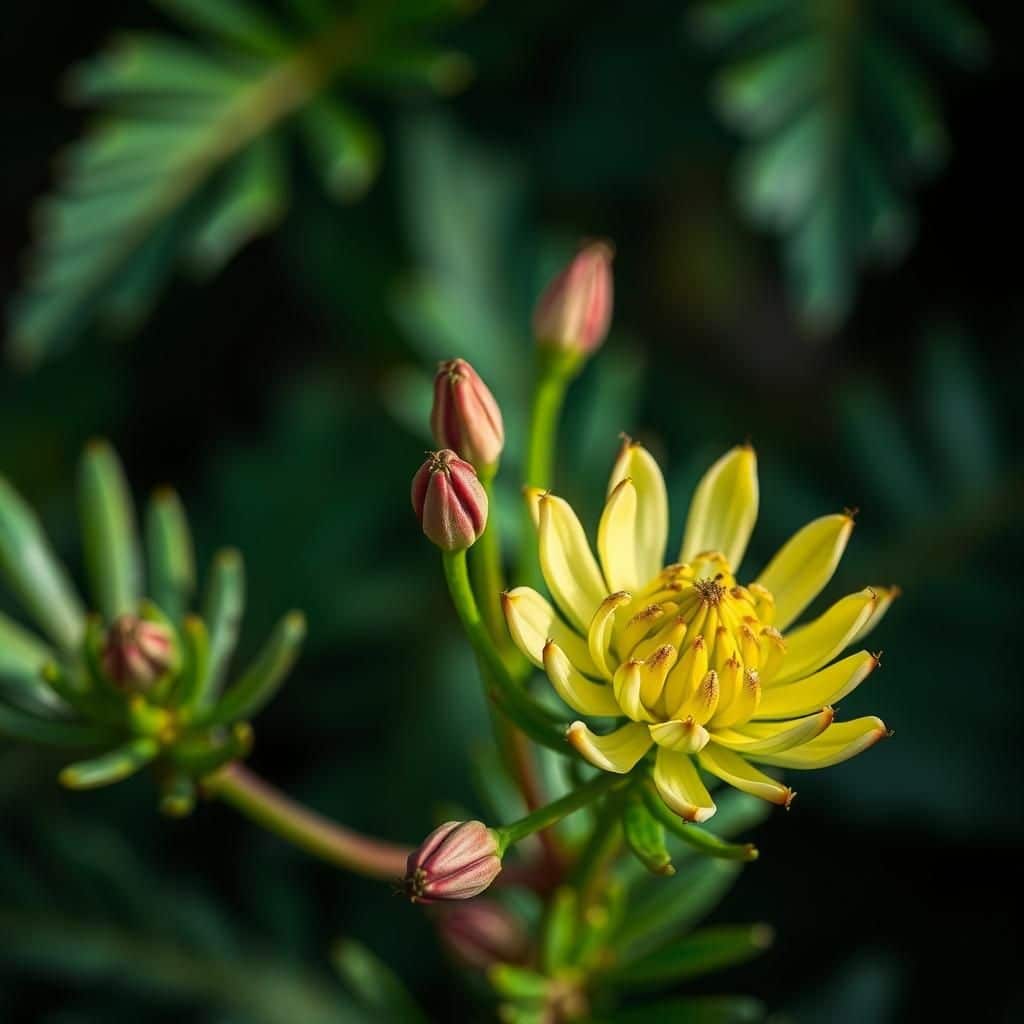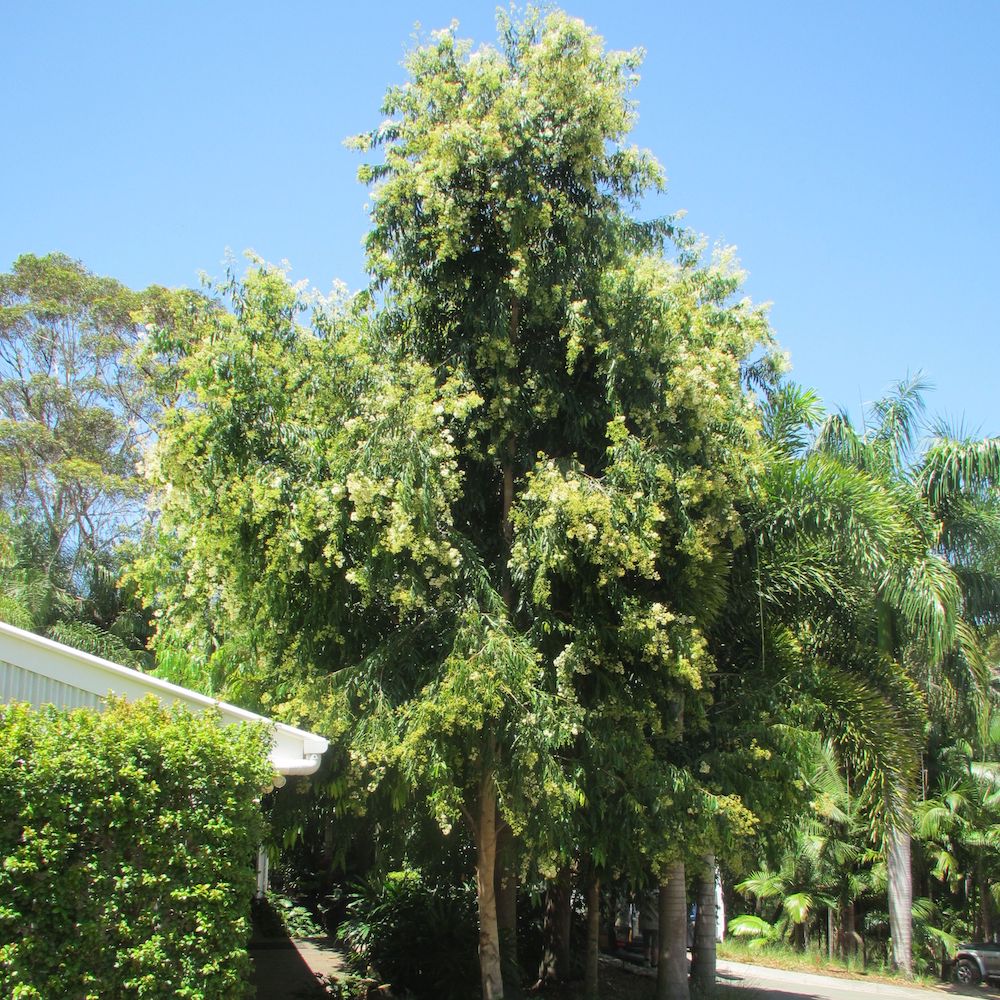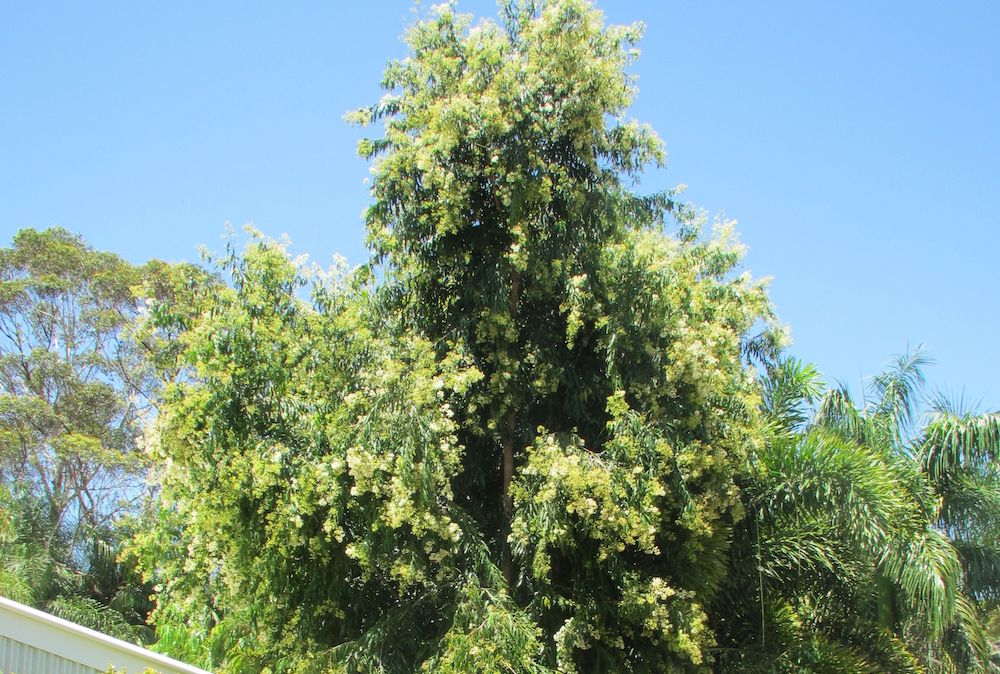Discover How Fast Does Lilly Pilly Grow: Growth Rates and Tips for Thriving Plants

Lilly Pilly, known for its lush foliage and vibrant berries, is a popular choice for gardeners seeking a fast-growing and versatile plant. Understanding how quickly Lilly Pilly grows is essential for fostering a thriving landscape. In this article, we'll explore the growth rates of various Lilly Pilly species, providing insights into their growth patterns under different conditions. Additionally, we'll offer practical tips to ensure these plants not only grow quickly but also remain healthy and vigorous. Whether you are a seasoned gardener or a novice, this guide will help you cultivate beautiful Lilly Pilly plants in your garden.
How Fast Does Lilly Pilly Grow?
Lilly Pilly, known for its lush foliage and beautiful berries, typically grows at a rapid pace, making it an ideal choice for gardeners looking for quick landscaping solutions. Depending on the specific variety, environmental factors, and care provided, these plants can achieve an impressive growth rate of 1 to 3 feet per year. In optimal conditions, such as well-drained soil and ample sunlight, Lilly Pilly can reach mature heights of 10 to 30 feet. Proper pruning can also promote denser growth and enhance the plant's overall appearance.
Ideal Growing Conditions for Lilly Pilly
For optimal growth, Lilly Pilly thrives in well-drained, fertile soil with a slightly acidic to neutral pH. It prefers locations that receive full sun to partial shade. Ample moisture is crucial, particularly in the early stages of growth; however, over-watering can lead to root rot. The climate also plays a significant role, as Lilly Pilly is best suited to warm, temperate regions, being tolerant of a range of conditions but flourishing in subtropical climates.
Growth Rate Comparison Between Varieties
Different varieties of Lilly Pilly exhibit varying growth rates. For instance, the Syzygium australe is known for its fast growth, often reaching 6 to 10 feet in just a few years, while other species like Syzygium oleosum may grow a bit slower, averaging 2 to 4 feet annually. Understanding the specific variety and its growth characteristics can help gardeners choose the right type based on their landscaping needs.
Pruning and Maintenance for Optimal Growth
Regular pruning is essential for maintaining the shape and vitality of Lilly Pilly. Ideal pruning times are during late winter or early spring before new growth begins. This process can encourage a bushier appearance and promote healthier growth. Additionally, removing dead or damaged branches ensures that the plant’s energy is directed toward healthy growth. Regular maintenance also includes checking for pests and diseases, which can inhibit the growth rate if left unmanaged.
Nutrient Requirements for Healthy Growth
Lilly Pilly generally requires a nutrient-rich diet to sustain its rapid growth. Fertilizers high in nitrogen, such as balanced slow-release fertilizers, can support foliage development and overall vigor. It's advisable to feed the plant during the growing season, typically from spring to early autumn. Additionally, incorporating organic matter, like compost, can improve soil quality and provide essential nutrients.
Environmental Factors Impacting Growth Rate
Environmental factors significantly influence the growth rate of Lilly Pilly. Variables such as regional climate, soil type, and water availability determine overall health and growth speed. Areas with poor drainage or extreme cold spells can inhibit growth, whereas a moderate climate with sufficient rainfall can enhance the plant's growth rate. Consistent temperature and moisture levels significantly impact how quickly Lilly Pilly reaches its full potential.
| Variety | Average Growth Rate (per year) | Mature Height |
|---|---|---|
| Syzygium australe | 1 to 3 feet | 10 to 30 feet |
| Syzygium oleosum | 2 to 4 feet | 8 to 20 feet |
| Syzygium paniculatum | 1 to 2 feet | 6 to 20 feet |
How do you make Lilly pilly grow faster?

To make Lilly Pilly grow faster, you need to focus on several key factors that contribute to its healthy growth and overall vitality. Here are some detailed guidelines:
Soil Quality
The quality of the soil plays a significant role in the growth rate of Lilly Pilly. Ensuring that it has the right nutrients and drainage can promote quicker growth.
- Well-draining soil: Ensure that the soil has good drainage to prevent waterlogging, which can lead to root rot.
- Nutrient-rich amendments: Incorporate organic matter such as compost or well-rotted manure to enhance nutrient availability.
- pH level: Check the soil pH; Lilly Pilly prefers a slightly acidic to neutral pH (about 6.0 to 7.0).
Watering Practices
Proper watering is essential for the growth of Lilly Pilly. Both overwatering and underwatering can negatively impact its health.
- Regular watering: Water regularly, especially during dry spells; aim for deep watering to encourage deeper root growth.
- Mulching: Apply mulch to retain moisture and regulate soil temperature.
- Avoiding water stress: Monitor the plant closely during the summer months to avoid drought stress, which can stunt growth.
Fertilization
Using the right type of fertilizer can encourage faster growth and lush foliage in Lilly Pilly.
- Slow-release fertilizers: Use a slow-release fertilizer specifically formulated for native plants to provide a steady nutrient supply.
- Timing: Fertilize during the growing season (spring and early summer) when the plant is actively developing.
- Follow dosage: Always follow the recommended dosage on the fertilizer packaging to avoid nutrient burn.
Pruning Techniques
Regular pruning contributes to the healthy growth of Lilly Pilly, encouraging a bushier and faster-growing plant.
See also:
- Timely pruning: Prune in early spring to encourage new growth before the growing season begins.
- Remove dead or damaged branches: Eliminating weak or diseased parts helps the plant focus its energy on healthy growth.
- Shape the plant: Prune to maintain the desired shape and encourage denser foliage, which enhances growth.
Pest and Disease Management
Controlling pests and diseases is vital to prevent stunted growth in Lilly Pilly.
- Regular inspections: Check the plant frequently for signs of pests like aphids or scale insects.
- Natural predators: Encourage beneficial insects that feed on common pests to maintain a healthy ecosystem.
- Prompt action: If any diseases or severe pest problems arise, treat them immediately to prevent spreading and subsequent damage.
How quickly do Lilly Pillies grow?

Lilly Pillies, scientifically known as Syzygium species, are popular choices for landscaping due to their vibrant foliage and ability to grow quickly. The growth rate of Lilly Pillies can typically range from 1 to 3 feet per year, depending on various factors such as environmental conditions, soil quality, and proper care. When planted in fertile, well-draining soil and provided with adequate water and sunlight, these plants can thrive and reach their mature height in a relatively short period.
Factors Affecting Growth Rate
The growth rate of Lilly Pillies can be influenced by several crucial factors:
- Soil Quality: Nutrient-rich, well-draining soil promotes quicker growth.
- Watering: Consistent moisture levels without over-watering can help the plant thrive.
- Light Exposure: Lilly Pillies prefer full sun to partial shade for optimal growth.
- Fertilization: Regular application of a balanced fertilizer can enhance growth rates significantly.
- Pests and Diseases: Keeping these at bay ensures uninterrupted growth.
Optimal Conditions for Growth
To maximize the growth of Lilly Pillies, it's essential to create an ideal environment:
- Climate: They perform best in temperate climates with mild winters and warm summers.
- Sunlight: Aim for at least 6 hours of direct sunlight daily.
- Water Needs: Regular watering during dry spells is crucial for young plants.
- Spacing: Provide adequate space between plants to prevent overcrowding.
- Mulching: Use organic mulch to retain soil moisture and improve soil conditions.
Typical Growth Timeline
Understanding the growth timeline helps in planning for landscaping:
- First Year: Lilly Pillies typically establish themselves and may grow 1-3 feet.
- Second Year: They usually continue to grow rapidly, reaching an additional 2-4 feet.
- Third Year: At this point, they may reach maturity, depending on the species.
- Mature Size: Depending on the variety, they can grow anywhere from 5 to 15 feet tall.
- Full Bloom: They may start producing flowers and fruits in their later years.
Care and Maintenance for Optimal Growth
Proper maintenance is key to ensuring healthy and rapid growth of Lilly Pillies:
- Pruning: Regular pruning can encourage bushier growth and healthier plants.
- Weed Control: Keep the area around the plants free from weeds.
- Pest Monitoring: Regularly check for common pests that may affect growth.
- Soil Testing: Periodically test soil pH and nutrient levels for adjustments.
- Seasonal Care: Adapt care routines according to seasonal changes in weather.
Common Varieties and Their Growth Rates
Different varieties of Lilly Pillies exhibit varying growth rates:
- Syzygium luehmannii: Known for its rapid growth up to 3 feet per year.
- Syzygium paniculatum: This variety grows moderately, averaging around 2 feet annually.
- Syzygium australe: A fast-grower that can reach 4 feet in ideal conditions.
- Syzygium jambos: Tends to grow slower but can still reach substantial heights.
- Syzygium oleosum: Grows at a moderate pace, typically 1-2 feet per year.
What are the disadvantages of Lilly pilly?

Lilly pilly, a popular Australian native plant often used for hedges and landscaping, does possess several disadvantages that potential growers should consider.
Environmental Sensitivity
Lilly pilly plants can be sensitive to environmental conditions, which may lead to problems such as poor growth or susceptibility to pests and diseases. The following factors can affect their health:
- Soil Type: Lilly pilly prefers well-draining soils. Heavy clay or waterlogged conditions can lead to root rot.
- Sunlight Requirement: While they can tolerate partial shade, insufficient sunlight can hinder their growth and flowering.
- Temperature Extremes: Exposure to extreme temperatures, particularly frost, can damage foliage and affect overall plant vitality.
Pest and Disease Susceptibility
These plants are prone to various pests and diseases, which can devastate their growth if not managed effectively. Common concerns include:
- Leaf Spot Diseases: Fungal infections can cause unsightly spots on leaves, leading to premature leaf drop.
- Psyllids: These sap-sucking insects can weaken the plant and cause distortion in new growth.
- Root Rot: Due to overwatering or poor drainage, lilly pilly can suffer from root rot, which is often fatal.
Rapid Growth and Maintenance Challenges
While lilly pilly thrives and grows quickly, this rapid growth can lead to maintenance challenges:
See also:
- Frequent Pruning: To maintain shape and prevent overgrowth, regular pruning is required, which can be time-consuming.
- Shape Management: Without proper trimming, lilly pilly can become unruly or leggy, detracting from its intended aesthetic.
- Watering Needs: Young plants require consistent moisture, necessitating careful watering practices to avoid neglect or overwatering.
Allergenic Reaction
Some varieties of lilly pilly can cause allergic reactions in certain individuals, resulting in undesirable side effects:
- Skin Irritation: Contact with the sap or foliage may lead to irritation for sensitive individuals.
- Respiratory Issues: Pollen from lilly pilly flowers can trigger allergic reactions in susceptible individuals, leading to respiratory discomfort.
- Mature Fruit Mess: The fallen fruits can be messy and may attract pests, contributing to hygiene problems in gardens.
Limited Aesthetic Versatility
While lilly pilly serves as a great hedge, its aesthetic versatility can be limited:
- Uniform Appearance: When pruned consistently, they can lack diverse visual appeal relative to other ornamental plants.
- Limited Color Variation: The foliage typically remains green, and flowering may not always produce vibrant colors.
- Potential for Monoculture: Heavy reliance on one plant type in landscaping can lead to a lack of biodiversity.
How big do Lilly Pillys get?

Lilly Pillys, known scientifically as Syzygium, are a group of evergreen shrubs and small trees native to Australia and some parts of Southeast Asia. The size of Lilly Pillys can vary significantly depending on the specific species and growing conditions. Generally, they can grow anywhere from 1 to 15 meters (approximately 3 to 50 feet) tall.
Factors Influencing the Size of Lilly Pillys
The growth potential of Lilly Pillys is influenced by several environmental and care-related factors.
- Soil Quality: Well-drained, nutrient-rich soil promotes better growth.
- Water Availability: Regular watering helps young plants establish but be cautious of overwatering.
- Sunlight: Full sun exposure enhances growth, while too much shade can limit their height.
Common Species of Lilly Pilly and Their Sizes
Different species of Lilly Pilly exhibit distinct growth characteristics.
- Syzygium jambos: Can grow up to 15 meters tall with a canopy spread of about 8 meters.
- Syzygium austral: Typically reaches around 10 meters in height.
- Syzygium paniculatum: Often grows between 5 to 12 meters tall, making it popular for hedges.
Growth Habit and Form
Lilly Pillys can exhibit different growth habits, which also affect their overall size.
- Tall and Upright: Some species grow straight upwards, forming a columnar shape.
- Bushy and Spreading: Others may develop a more bushy appearance, growing wider than they do tall.
- Dwarf Varieties: Some cultivars are bred to remain compact, growing only 1 to 3 meters tall, ideal for smaller gardens.
Pruning and Maintenance Impacts on Size
Regular pruning can significantly influence the size and shape of Lilly Pillys.
- Promotes Bushier Growth: Pruning encourages lateral growth, resulting in a denser plant.
- Controls Height: Cutting back taller branches helps maintain a desired height.
- Enhances Health: Removing dead or damaged branches promotes overall plant vitality.
Uses in Landscaping and Size Considerations
Understanding the size potential of Lilly Pillys is crucial for landscaping applications.
- Privacy Screens: Taller varieties are excellent for creating privacy hedges.
- Garden Focal Points: Specimens can serve as stunning centerpieces due to their height and foliage.
- Urban Gardens: Dwarf varieties suit smaller spaces or container gardening.
Questions from Our Readers
How fast does lilly pilly grow?
The growth rate of a lilly pilly can vary depending on the specific species and environmental conditions. Generally, these plants can grow quickly, often reaching heights of up to 1 meter (3 feet) in just a couple of years under optimal conditions.
What conditions influence the growth rate of lilly pilly?
Several factors influence the growth rate of lilly pilly, including soil quality, moisture levels, and sunlight exposure. Providing the right amount of water and well-drained soil can significantly enhance its growth performance.
How can I promote faster growth in my lilly pilly?
To promote faster growth in lilly pilly, you should ensure that the plant receives full sun for at least part of the day, use a balanced fertilizer, and maintain adequate moisture in the soil. Regular pruning can also encourage denser and healthier growth.
What is the expected lifespan of a lilly pilly?
Lilly pilly plants can have a long lifespan, typically living for 10 to 20 years or more when properly cared for. With good maintenance, including appropriate watering and fertilization, they can continue to thrive for a significant duration.
See also:

If you want to read more articles like Discover How Fast Does Lilly Pilly Grow: Growth Rates and Tips for Thriving Plants, we recommend you check out our Shrubs category.
Leave a Reply
Related Articles